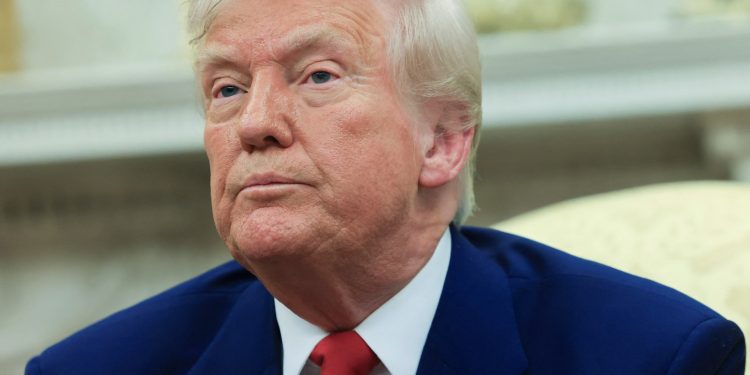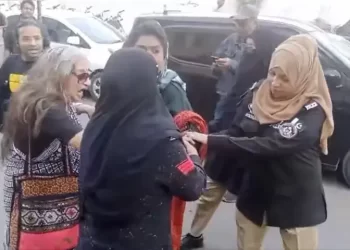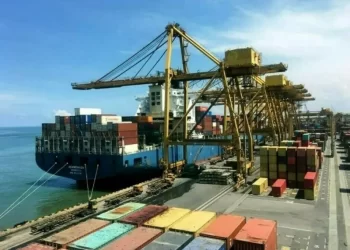Barely inhabited islands, countries the US enjoys a trade surplus with, and a tariff formula that isn’t about tariffs.
President Donald Trump announced sweeping tariffs on more than 180 trading partners of the United States last week.
He described these as “reciprocal tariffs” against countries that impose heavy duties on US imports, aimed at rebalancing a global trade equation that he has long argued is weighted against his country.
The president has cited imbalanced US trade to justify his argument. Indeed, the US has the largest trade deficit in the world and, in 2023, its import costs were $1.1 trillion more than its exports.
However, some of his tariff targets are sparsely populated islands that barely trade with the US and pose little economic challenge to the world’s largest economy.
Still, others are countries that the US has a trade surplus with — raising questions about the Trump administration’s formula for calculating the tariffs, even as it says that dozens of countries are lining up to negotiate with Washington on lowering the duties slapped on their goods.
So what is the tariff formula used by the Trump team? Which are some of the hardest-to-explain targets? And can negotiations help these and other countries and territories?
But, in reality, the formula used by the Trump administration to calculate what it says are reciprocal tariffs has nothing to do with the tariffs imposed by other countries on the US at all.
Instead, to determine its tariff rate for a country, the administration has divided the trade deficit by two times the value of total imports from that country and multiplied the resulting number by 100 to obtain a percentage value.
A trade deficit occurs when a country’s imports are worth more than its exports, while a surplus refers to when exports are of higher value than imports.
For example, the US trade deficit with China in 2024 was $295bn and the total imports from China were $439bn. Dividing the deficit by the imports yields 0.67, and this number halved is 0.34. Trump has imposed a reciprocal tariff of 34 percent on China. The equation does not actually factor in the tariff percentage that China has imposed on US products.
And the Trump administration has not followed even this formula uniformly — if it did, there should be no tariffs imposed on countries and territories with which the US has a trade surplus.
How did Trump calculate the reciprocal tariffs?
Here are some of Trump’s most bizarre tariff targets:
Trump hit the Australian territory of Heard Island and McDonald Islands, about 1,700km (1,056 miles) from Antarctica and 4,000km (2,485 miles) from Perth city, with a 10 percent tariff.
Australian leaders, including Trade Minister Don Farrell, speculated that Trump tariffed the islands by mistake. “Poor old penguins, I don’t know what they did to Trump, but, look, I think it’s an indication, to be honest with you, that this was a rushed process,” Farrell told the Australian Broadcasting Corporation on April 4.
But Trump’s aides insist that this was not a mistake.
Commerce Secretary Howard Lutnick told CBS News on Sunday that the islands were tariffed so that Trump’s other tariff targets do not try to bypass their tariffs by exporting their products to the US through remote islands like Heard and McDonald. “If you leave anything off the list, the countries that try to basically arbitrage America go through those countries to us,” said Lutnick.
Trump also slapped a 29 percent tariff on another Australian territory, Norfolk Island.
The territory is in the South Pacific Ocean, about 1,600km (990 miles) northeast of Sydney, with a population of about 2,000. World Bank data shows that the US imported goods worth $273,000 in 2022 from the territory. Most of these goods were labelled as “chemicals”.
In 2024, the US had a trade deficit of $100,000 with Norfolk Island.
“I’m not quite sure that Norfolk Island, with respect to it, is a trade competitor with the giant economy of the United States, but that just shows and exemplifies the fact that nowhere on earth is safe from this,” Australian Prime Minister Anthony Albanese said, speaking of the tariffs imposed on the territory.
Cocos or Keeling Islands is another Australian territory in the Indian Ocean with a 10 percent tariff.
The island with 544 people had a trade surplus of $1.5m with the US in 2024.
Yet another Australian territory in the Indian Ocean – home to 1,692 people – Christmas Island also faces a 10 percent US tariff.
In 2024, the territory had a trade surplus of $400,000 with the US. A quarter of the island’s exports go to the US, where it sends paintings, amine compounds — chemicals used for making nylon and dyes — and broadcasting equipment, according to the Observatory of Economic Complexity.









